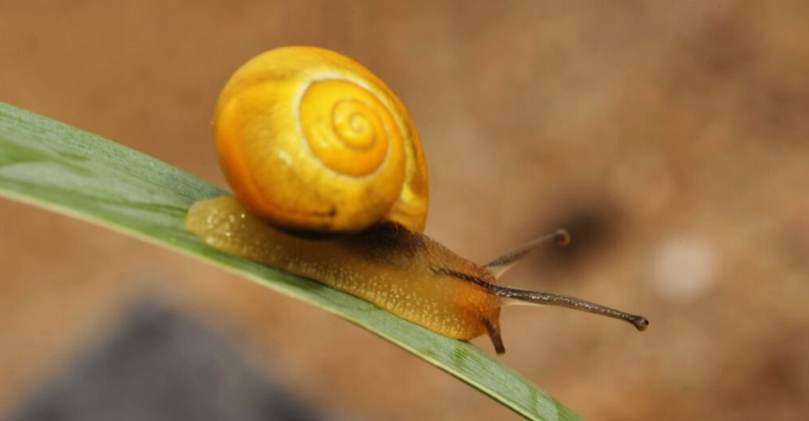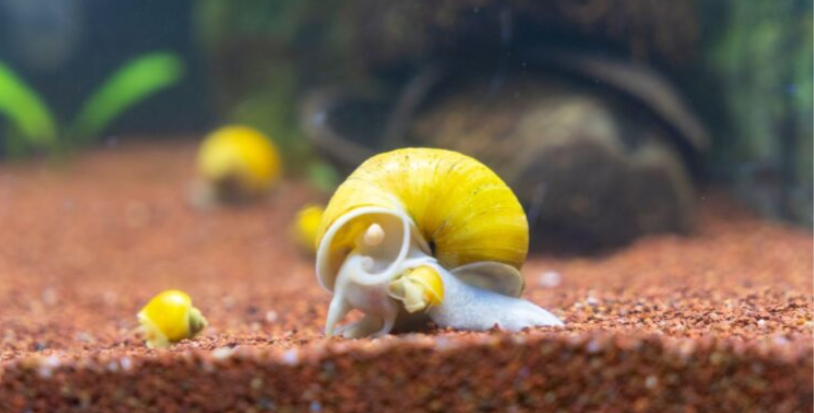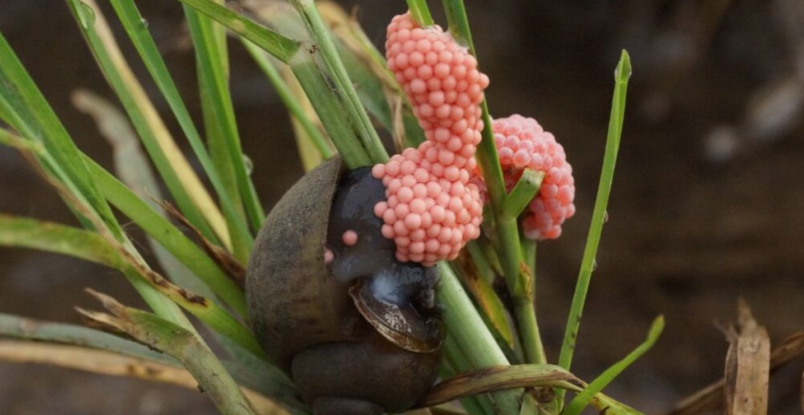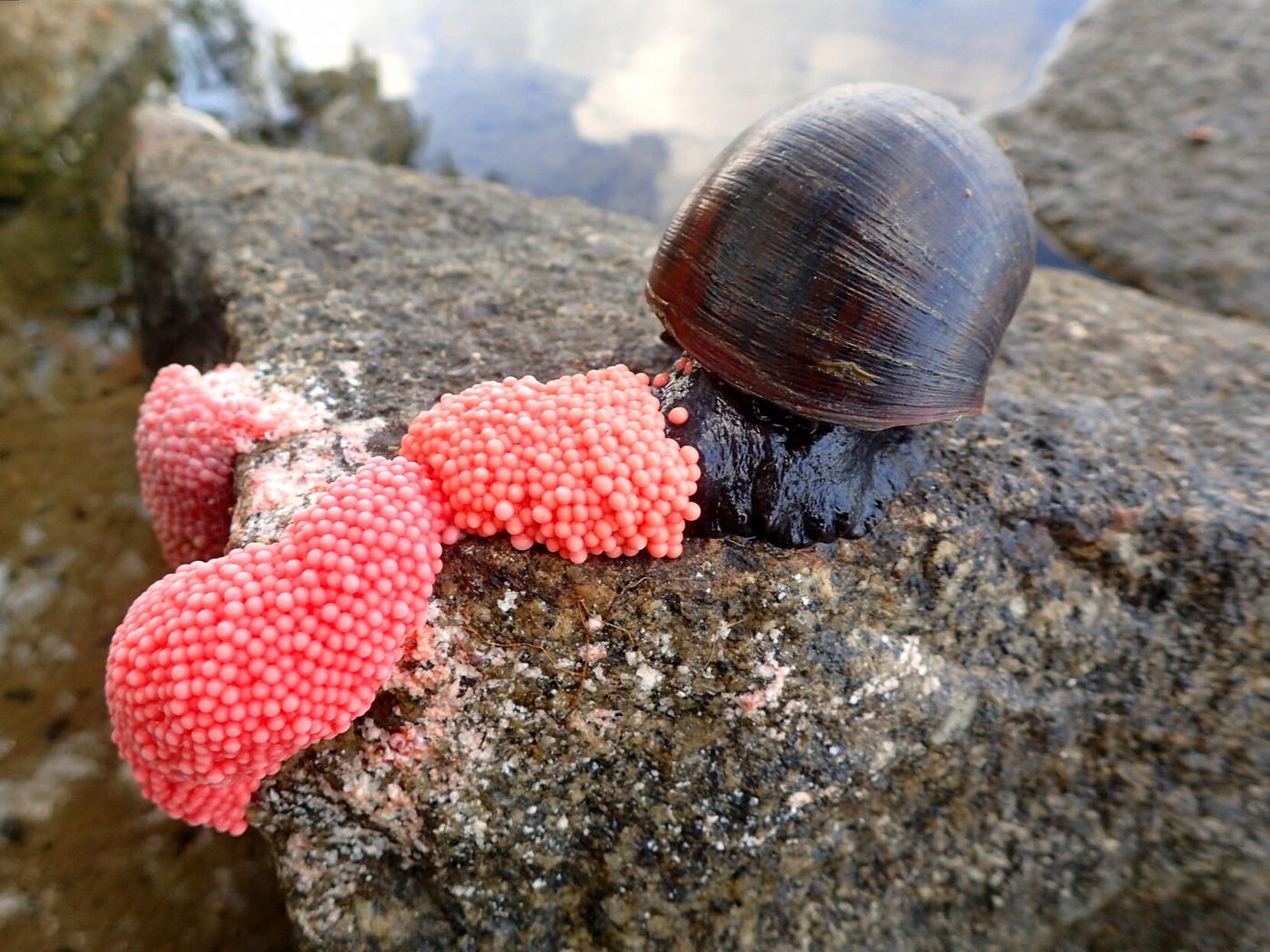Be cautious if you spot small pink eggs on a wall, as they may signal a problem for your home
If you come across clusters of small, vibrant pink eggs in your garden, they might seem innocent or even decorative. However, these eggs are actually laid by the invasive apple snail, a species that poses a significant threat to local ecosystems. Native to South America, the apple snail has spread across the globe, causing damage to plants, crops, and habitats wherever it takes root.
The Apple Snail: A Threat to Freshwater Ecosystems

The apple snail is a large freshwater mollusk, much bigger than the typical garden snail. With shells reaching up to ten centimeters in width, they are an imposing presence in wet environments like ponds, lakes, and swamps. Apple snails thrive in warm climates, where they reproduce rapidly and spread easily.
The snails lay eggs in clusters of pink or orange, with each egg measuring about 2-3 millimeters in diameter. These clusters can contain anywhere from 400 to 600 eggs, a reflection of the snail’s prolific breeding habits, making them a powerful invasive force.
Why Apple Snails Are So Dangerous
Apple snails have earned a spot among the world’s most invasive species due to their adaptability and resilience. Originally from South America, they have expanded into North America, Asia, and Europe, particularly in regions with warm, humid conditions. In these new environments, they quickly outcompete native species, disrupt local ecosystems, and cause significant agricultural damage.
In places like Southeast Asia, where apple snails were introduced in the 1980s, they are infamous for devastating rice paddies. Their appetite for vegetation, combined with rapid reproduction, allows them to wreak havoc on crops and reduce biodiversity in the areas they infest.
The Impact of Apple Snails
The bright pink or orange egg clusters of the apple snail are among the clearest signs of their presence. Found on leaves, branches, and other elevated surfaces near water, the eggs’ coloration serves as a warning to predators, as they contain toxins that make them less appealing. These snails can destroy vast quantities of aquatic plants, which are crucial to the health of ecosystems. By devouring these plants, apple snails disrupt water quality, harm fish populations, and upset the balance of local habitats.
Their feeding habits also pose a threat to agriculture. In addition to consuming aquatic plants, apple snails target crops like rice, causing severe financial losses for farmers.
What Can Be Done to Control Apple Snails?

Managing the spread of apple snails requires coordinated action due to their rapid reproduction and ability to thrive in new environments. While the sale of apple snails as pets has been banned in many areas to prevent their release into the wild, other strategies are essential for controlling their spread.
Some of the most effective measures include:
- Reporting Sightings: Many countries have established hotlines or websites where citizens can report apple snail sightings. Early detection is critical to limiting their spread.
- Manual Removal: In affected areas, local authorities encourage the removal of apple snail eggs by hand. This process involves scraping the egg clusters off surfaces and disposing of them properly. Gloves should always be worn, as the eggs can contain toxins.
- Biological Controls: Researchers are exploring the use of natural predators or parasites to control apple snail populations. While still in the experimental phase, these methods are monitored closely to avoid unintended ecological consequences.
- Public Education: Awareness campaigns help people recognize the danger of invasive species like the apple snail and promote proactive measures to combat their spread.
Apple Snails and Your Garden

For gardeners, the presence of apple snail eggs is a serious concern. If you have ponds or water features, these snails can quickly deplete the plants in your garden, impacting both aesthetics and the health of your garden. By spotting and removing these egg clusters early, you can help protect your garden and the surrounding environment.
Conclusion: Stay Alert
Finding pink egg clusters in your garden is a clear sign that apple snails may be nearby. These invasive creatures pose a substantial threat to biodiversity, agriculture, and aquatic ecosystems. By being vigilant, reporting sightings, and taking action to remove eggs, you can help control their spread and protect your local environment. Every effort counts in safeguarding our ecosystems from invasive species like the apple snail.
